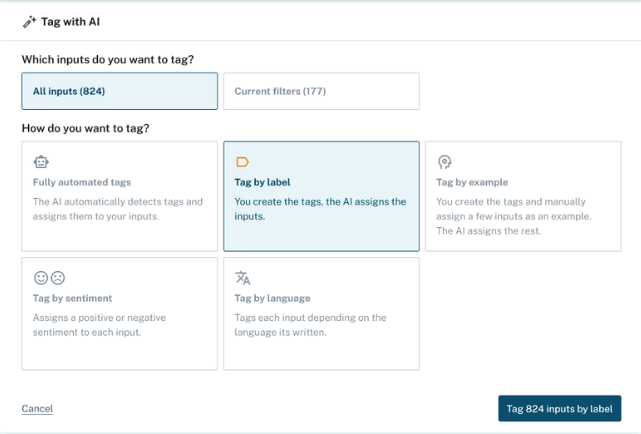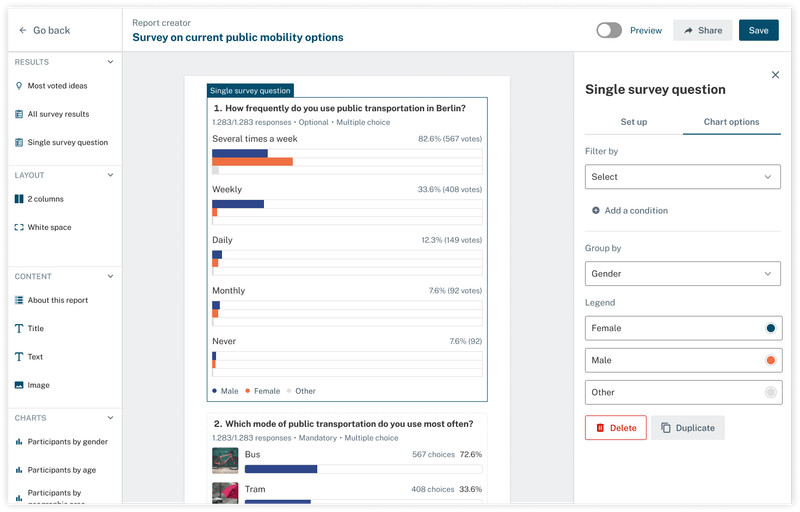Making Sense of Community Voices and Encouraging Civic Curiousity: Can AI Help?

Visual generated with Midjourney
IN CONVERSATION WITH EMILE HEYMANS, GO VOCAL (FORMERLY CITIZENLAB), SPEAKER AT CITYDNA INTERNATIONAL CONFERENCE IN BOLOGNA: ‘REALITY CHECK! ON FACT AND FICTION IN URBAN TOURISM’
Written in collaboration between City Destinations Alliance and Group NAO.

Community engagement is one of the most powerful components in decision and policy making, but it can be challenging to make sense of such expansive input and data. What if artificial intelligence could help you make sense of your community input? Does it streamline or dilute data? And how can digital platforms complement, rather than counteract, “offline” engagement processes?
We took a walk with Emile Heymans, Community Engagement Specialist, along the streets of Bologna to hear more about how Go Vocal, an online platform, consolidates, analyses and connects community engagement into one platform. From surveys and polling capabilities to participatory budgeting tools, residents are engaged and kept in the loop at every step of the process to encourage a culture of civic curiosity.
What would you say is the core mission of Go Vocal?
To make policy decision-making processes more inclusive and engage more people through different channels. It also works to make this engagement continuous throughout the whole policy cycle, not just through one-off surveys. We strive to make our platform responsive, meaning that this tool is something that really facilitates engagement and is easy to use.
As a citizen, what kind of process can I expect?
Clarity. As a citizen, if you want to participate in shaping policies, you need to easily know what is on the agenda and how you can have a say. Go Vocal provides a central hub for this information. You also get notified about each next phase in the policy making process. With Go Vocal, citizens can quickly understand the issues at hand and how they can have a say in them. I believe this process allows citizens to exercise their democratic rights. It does this primarily by providing visibility and legitimacy to the engagement process. Whilst the final decisions might not always change, the process ensures that all voices are heard, which is crucial for democratic legitimacy.
How can the AI ‘sense-making’ tool allow local governments or DMOs, engage with community input differently?
I like this question a lot. With Generative AI, especially at the stage it is in right now, it does not replace your ‘thinking’, it just helps you think. Traditionally, you might spend hours on spreadsheets, trying to categorise and make sense of hundreds of community opinions. The sensemaking tool begins by organising thousands of pieces of community input by auto-tagging to highlight key themes and topics within seconds. The issues that matter most to your community are uncovered here.

Next, complex data sets can be summarised in seconds into actionable insights. Here sources are verified to ensure insights accurately reflect the community’s input.

Finally, the data can be transformed into reports where you can customise them to highlight critical themes derived from your community’s input. However, it’s essential to dedicate time and effort to creating really good research questions. Without thoughtful questions, the quality of the answers will always be compromised.

Do you think all community engagement processes should use digital platforms?
It depends on your research question and who you intend to target. Not every community or local government needs to use Go Vocal, but what’s most important to consider is the specific target group you’re trying to reach, and the inputs you are trying to find and make sense of. Digital community engagement makes sense when the research questions lend itself to do so.
In a world where you want to tackle complex issues, you need solutions that will approach a problem in various ways. I believe citizen assemblies and a digital platform can be combined and complement each other. For example, citizens could organise “offline” gatherings to develop qualitative proposals for a specific problem, such as renovating a beautiful square. These qualitative proposals can then be transferred to a digital platform and put to a vote with more citizens. This is how these processes can complement each other. There are also different ways the voting can work; participants might allocate a set number of votes across different proposals or use a participatory budget voting system. In the latter, participants are given a hypothetical budget, such as 1,000 euros, to allocate to different ideas. For example, they might decide one idea is worth 300 euros and another 500 euros. This method allows citizens to “shop around” with the ideas in front of them, helping them understand resource limitations and prioritise projects realistically.